Spring lawn care in Canada is more than just a seasonal task; it’s a critical investment in your lawn's long-term health. After the harsh winter months, your lawn may have suffered from snow mold, ice damage, or simply the stress of being dormant. Spring is the time to revive your grass, address any winter-related issues, and prepare it for vigorous growth throughout the warmer months. By focusing on spring lawn care steps now, you ensure a lush, vibrant lawn that’s better able to withstand pests, drought, and other challenges. Plus, with the right techniques, you’ll minimize the risks of pests, weeds, and diseases, which can all hinder the beauty and health of your lawn.
Preparing Your Lawn for Spring
As the temperatures warm up across Canada, your lawn needs a bit of attention to ensure it’s ready to thrive. The first step is to thoroughly prepare your lawn for the season, which involves assessing its health, cleaning up winter debris, and making sure the grass has the proper conditions to grow.
Assessing Lawn Health After Winter
After a long Canadian winter, it’s crucial to inspect your lawn for any signs of damage. Winter can take a toll on your grass, leading to patches of dead or weakened areas, often caused by snow mold, frost damage, or even ice buildup. Identifying these issues early can help prevent them from becoming larger problems as the weather warms up.
For Canadian homeowners, winter can also compact the soil, especially in areas with heavy snow or ice. This can affect root growth, leading to a patchy and weak lawn come spring. By inspecting these areas closely, you can identify spots that need reseeding or further care.
Actionable Steps:
- Look for dead patches that don’t green up when the weather warms.
- Examine soil condition by checking for compaction or excess moisture.
- Check for pests that may have overwintered and are ready to emerge.
Removing Debris and Raking
Once you've assessed the condition of your lawn, it’s time to remove any debris left over from winter. This includes fallen branches, leaves, or twigs that may have accumulated. Canadian lawns are particularly prone to developing a thick layer of thatch, a dense mat of dead grass and organic material. If left unchecked, this can smother your lawn, blocking water, nutrients, and sunlight from reaching the soil.
Raking your lawn not only removes debris but also helps break up the thatch layer. This process improves soil aeration and encourages new grass growth. For Canadian homeowners, this is especially important as it helps ensure that moisture isn’t trapped beneath the thatch layer during spring rains.
Actionable Steps:
- Rake thoroughly to remove leaves and twigs and loosen compacted areas.
- Aerate your lawn using a dethatching rake or a power rake if necessary.
- Clean garden beds to allow for better sunlight exposure and airflow to your grass.
Lawn Aeration: Why and How?
Aeration is a critical part of spring lawn care in Canada, especially if your lawn experienced heavy snow or ice over the winter. It involves creating small holes in the soil to relieve compaction, improve airflow, and enhance nutrient absorption. Aerating your lawn allows water, air, and nutrients to penetrate deeper into the root zone, promoting stronger, healthier grass growth.
The Best Time for Aeration in Canada
Timing is everything when it comes to aerating your lawn. In Canada, the best time for aeration is typically early spring or early fall when the grass is actively growing. However, for spring lawn care, it's essential to aerate once the soil has thawed but before the temperatures become too warm. Cool-season grasses commonly found in Canadian lawns, such as Kentucky bluegrass and fescue, benefit most from spring aeration.
- Check soil temperature: Ensure the ground is thawed and not overly saturated.
- Use core aerators: For best results, use a core aerator rather than spike aerators to effectively reduce compaction.
- Aerate before fertilizing or overseeding: This allows better penetration of nutrients and seeds into the soil.
How to Aerate Your Lawn Properly
Proper aeration involves using the right equipment and technique. For most homeowners, renting a core aerator is the most efficient way to get the job done. This machine removes small plugs of soil and thatch from the lawn, allowing air and nutrients to reach the roots more effectively.
- Prepare your lawn: Mow your grass shorter than usual and mark sprinkler heads to avoid damage.
- Aerate in a consistent pattern: Overlap passes slightly to ensure complete coverage.
- Leave plugs on the lawn: They will break down naturally and contribute to soil health.

Fertilizing for Healthy Growth
Spring fertilization is essential for jump-starting grass growth after a long Canadian winter. Applying the right fertilizer at the right time provides your lawn with the nutrients it needs to recover, grow thicker, and become more resistant to pests and diseases.
Understanding Fertilizer Types and Nutrient Needs
Fertilizers come in various forms, each designed to address specific lawn care needs. In Canada, it's crucial to choose a fertilizer rich in nitrogen, phosphorus, and potassium to support healthy growth.
Types of Fertilizers:
- Slow-Release Fertilizers: Provide nutrients gradually, promoting steady growth over time.
- Quick-Release Fertilizers: Offer immediate nutrient availability but require more frequent applications.
Consider choosing a fertilizer with a balanced N-P-K ratio suitable for your grass type. For cool-season grasses commonly grown in Canada, such as Kentucky bluegrass and fescue, a higher nitrogen content is generally beneficial.
Timing Your Fertilization for Maximum Effect
Fertilizing at the right time is crucial. In Canada, the best time for spring fertilization is usually between late April and early May, depending on your region’s climate. Applying fertilizer when the grass is actively growing ensures optimal nutrient absorption.
- Test soil pH: Aim for a pH between 6.0 and 7.0 for most lawns.
- Apply fertilizer evenly: Use a broadcast spreader to ensure consistent coverage.
- Water after fertilizing: This helps nutrients penetrate the soil effectively.
Seeding or Overseeding Your Lawn
If your lawn has developed thin or bare patches over the winter, seeding or overseeding is essential for achieving a lush, healthy lawn. This process promotes thicker grass growth and improves the lawn’s resistance to weeds and pests.
Best Grass Varieties for Canadian Lawns
In Canada, cool-season grasses like Kentucky bluegrass, perennial ryegrass, and fescue are most suitable. They thrive in the cooler spring and fall temperatures, providing vibrant, dense lawns that withstand seasonal changes. Choosing the right grass type for your region is crucial for long-term success.
Techniques for Successful Seeding
To ensure effective seeding or overseeding, follow these steps:
- Prepare the soil: Aerate and rake the soil to create optimal seed-to-soil contact.
- Apply the seed evenly: Use a spreader for consistency.
- Keep the soil moist: Water lightly and frequently until germination occurs.
- Timing matters — aim to seed or overseed your lawn in early to mid-spring when soil temperatures are ideal for germination.

Watering Tips for Spring Lawn Care
Watering your lawn properly in the spring is one of the most crucial steps in establishing a strong, healthy lawn for the rest of the year. While Canadian springs can be unpredictable, providing adequate moisture is essential for promoting deep root growth and ensuring your grass thrives.
How Much Water Does Your Lawn Need?
In general, Canadian lawns require about 1 to 1.5 inches of water per week, including rainfall. The exact amount needed can vary based on factors like grass type, soil condition, regional climate, and recent weather patterns. For instance:
- Sandy Soils: Drain quickly, requiring more frequent watering.
- Clay Soils: Retain moisture longer but need deeper, less frequent watering to prevent compaction.
- Tip: Use a rain gauge or empty tuna can to measure how much water your lawn is receiving each week from irrigation and rainfall.
When and How to Water Your Lawn in Spring
Proper watering techniques can make all the difference:
- Water Early in the Morning: Watering between 6 a.m. and 10 a.m. allows moisture to soak into the soil before the sun causes rapid evaporation.
- Water Deeply and Infrequently: It's better to water thoroughly once or twice a week than to provide shallow, frequent watering. Deep watering encourages grass roots to grow deeper, making your lawn more resilient during dry spells in summer.
- Avoid Overwatering: Saturated soil can suffocate roots and promote fungal growth. Monitor your soil moisture regularly, especially during periods of heavy rain.
- Practical Advice: After fertilizing or seeding, keep the soil lightly moist for the first couple of weeks to encourage nutrient absorption and seed germination. Once established, transition to deeper, less frequent watering.
Dealing with Spring Lawn Pests and Weeds
Spring is not only the time for new growth but also when pests and weeds start making their unwelcome appearances. Addressing these issues early will help keep your lawn healthy and attractive throughout the growing season.
Preventing Common Lawn Pests
Canadian lawns are particularly vulnerable to pests like grubs, chinch bugs, and sod webworms. These pests can cause significant damage if not controlled promptly.
- Grubs: Feed on grass roots, creating brown patches.
- Chinch Bugs: Thrive in dry, sunny areas, sucking moisture from grass blades.
- Sod Webworms: Larvae that eat grass leaves, leading to bare patches.
Prevention Tips:
- Maintain proper mowing and watering habits to keep grass healthy and resilient.
- Apply nematodes in late spring to combat grubs naturally.
- Regularly inspect your lawn for signs of infestation and address them quickly.
How to Control Weeds in Spring
Weeds are another common problem in Canadian lawns, particularly broadleaf weeds like dandelions and clover. Addressing them early is key.
- Pre-Emergent Herbicides: Apply in early spring before weed seeds germinate.
- Hand-Pulling: Effective for small areas or isolated weeds.
- Overseeding and Fertilizing: Encourages thick, healthy grass growth, which naturally crowds out weeds.
- Natural Methods: Vinegar solutions or corn gluten meal can be used as organic weed control options.
- Best Practice: Ensure your lawn is properly fertilized, watered, and mowed to make it less hospitable to weeds and pests. Healthy lawns naturally resist invasions better.
Conclusion: Stay Consistent for a Healthy Lawn Year-Round
Spring lawn care is the foundation for a beautiful and healthy lawn throughout the year. By properly preparing your lawn, aerating, fertilizing, seeding, watering, and managing pests and weeds, you’ll be setting your grass up for success during the growing season.
Consistency is key. Regular maintenance, timely interventions, and proper techniques will help you achieve a lush, vibrant lawn that’s the envy of the neighborhood. Take action this spring and watch your lawn thrive well into summer and beyond!
Frequently Asked Questions
1. What is the first thing you put on your lawn in the spring?
The first step in spring lawn care is to clean your lawn by removing debris such as leaves, twigs, and dead grass that have accumulated over the winter. This cleanup allows your grass to breathe and prepares it for subsequent treatments.
2. What is the best lawn treatment in spring?
A comprehensive spring lawn treatment includes:
- Aeration: Alleviates soil compaction and enhances root growth.
- Fertilization: Supplies essential nutrients for healthy growth.
- Overseeding: Fills in bare spots and improves turf density.
- Weed Control: Prevents weeds from establishing.
3. What is the best product to put on your lawn in the spring?
Applying a slow-release, nitrogen-rich fertilizer is recommended in the spring to promote steady growth without causing nutrient burn. Additionally, using a pre-emergent herbicide can help prevent weed seeds from germinating.
4. When should I fertilize my lawn in spring in Canada?
In Canada, it's advisable to fertilize your lawn twice in the spring:
- Early Spring: Once grass begins to green up and soil temperatures reach around 10°C (50°F).
- Late Spring: Approximately 6 to 8 weeks after the first application.
5. Should you fertilize before or after rain?
It's best to fertilize before a light rain. The rainfall helps dissolve the fertilizer, allowing nutrients to penetrate the soil effectively. However, avoid fertilizing before heavy rain, as it can cause runoff, waste fertilizer, and potentially harm the environment.
6. When should I overseed my lawn in spring in Canada?
The optimal time to overseed your lawn in Canada varies by region:
- Western Canada (BC, Alberta, Saskatchewan): March to early May.
- Eastern Canada (Ontario, Quebec): April to early June.
7. Should I scalp my lawn in the spring?
Scalping—cutting the grass extremely short—is generally not recommended for cool-season grasses common in Canada. Maintaining a mowing height of 6 to 8 cm (2.5 to 3 inches) encourages deep root development and a healthier lawn.
8. When should you aerate your lawn?
The ideal time to aerate your lawn depends on the grass type:
- Cool-Season Grasses (e.g., Kentucky bluegrass, fescues): Early spring or early fall.
- Warm-Season Grasses: Late spring to early summer.





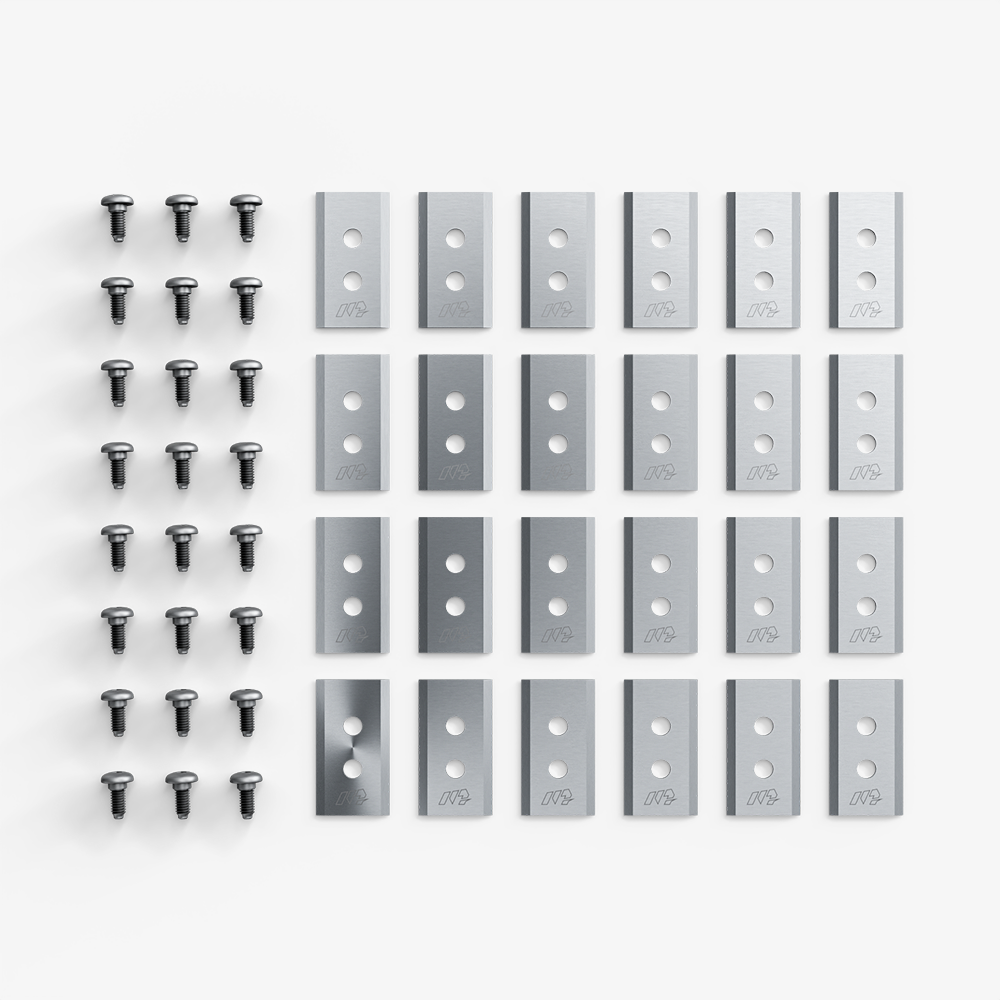
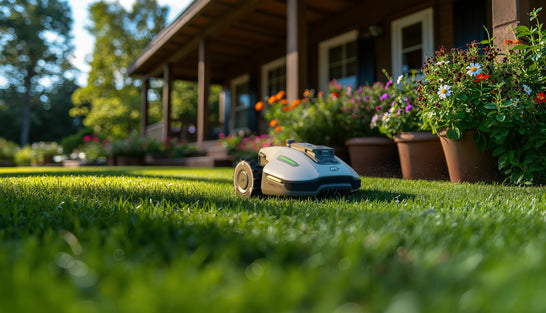










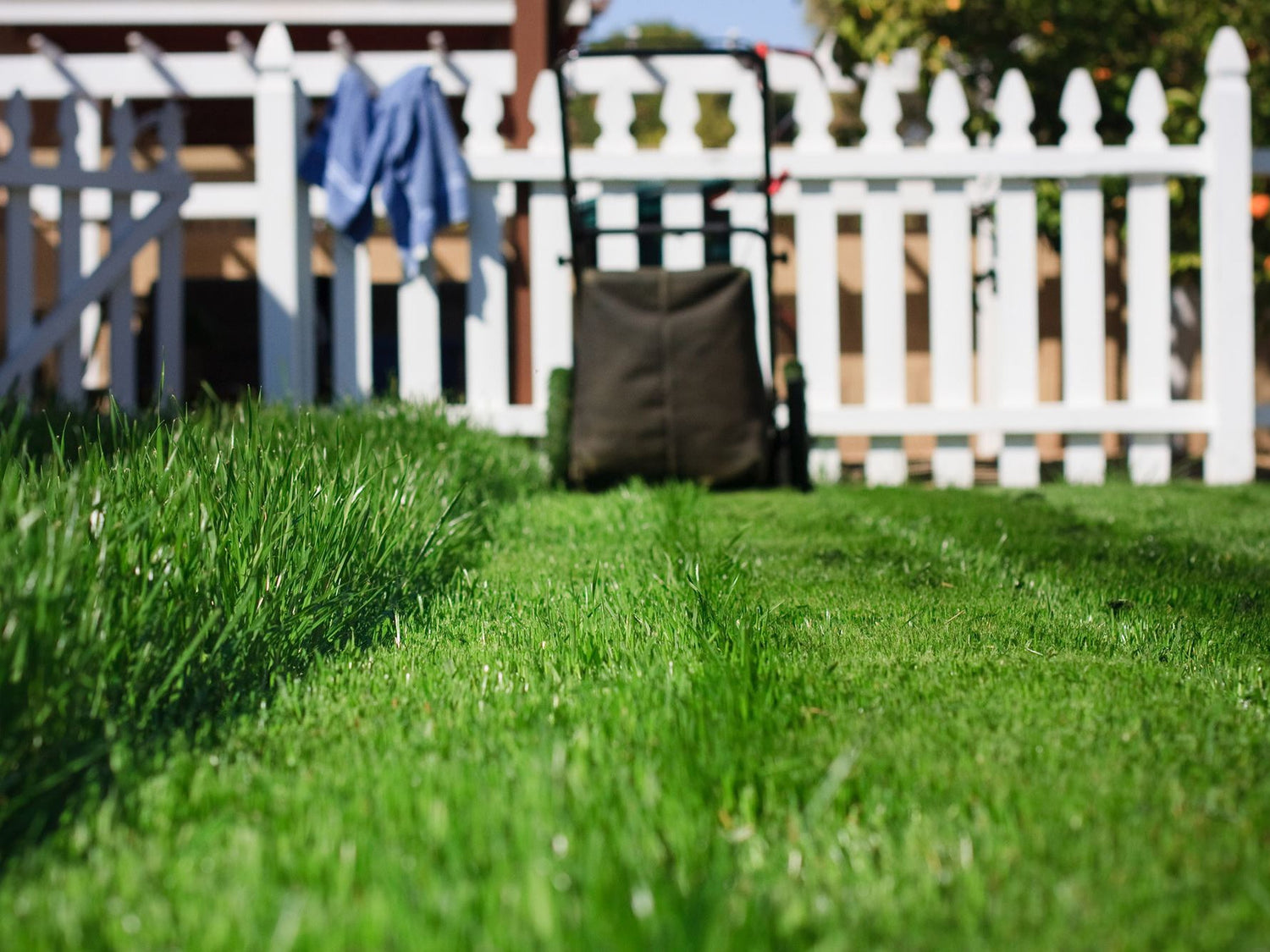

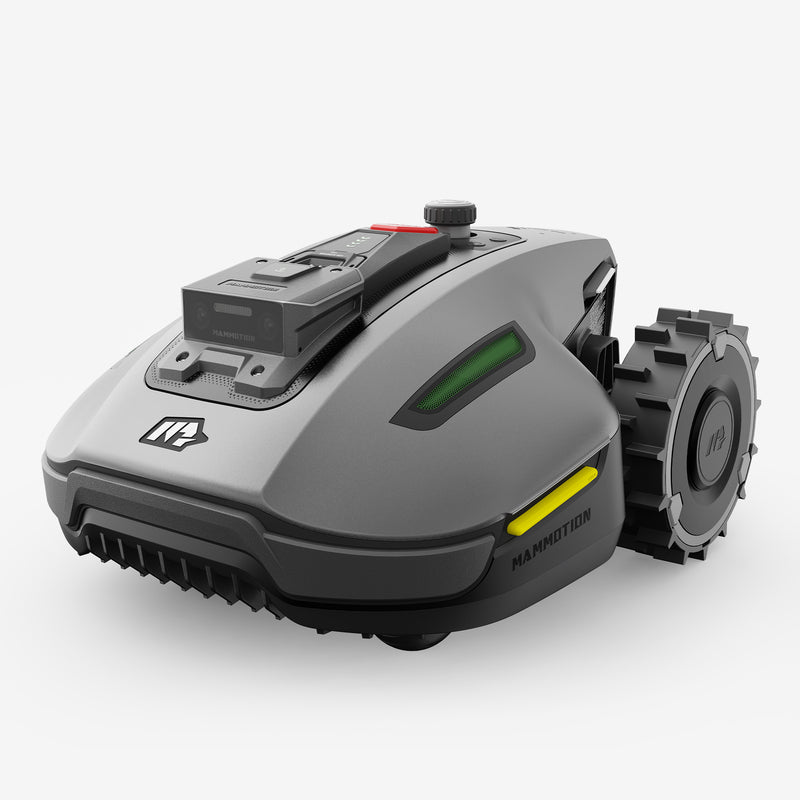
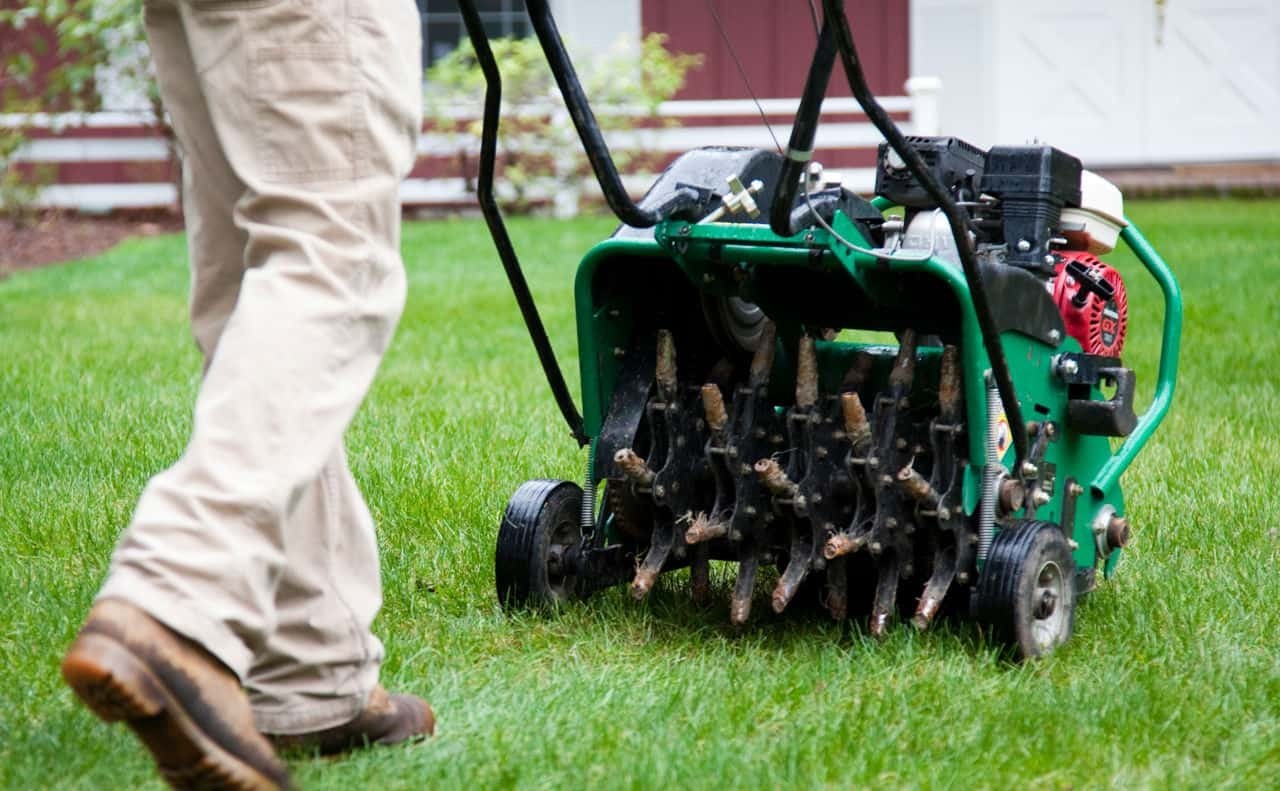
Leave a comment
This site is protected by hCaptcha and the hCaptcha Privacy Policy and Terms of Service apply.